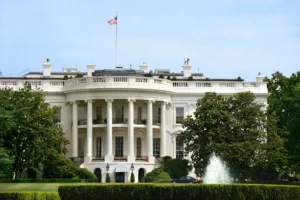- A shock jump in average earnings growth risks creating another state pension headache for the government
- The ‘triple-lock’ guarantees the state pension rises by the highest of average earnings growth, inflation or 2.5% each year
- Seasonally adjusted pay growth for the three months to July is the figure that counts for the triple-lock, while CPI for the year to September is the key inflation figure
- Figures published this morning show that, in the three months to June, this measure of earnings growth spiked to 8.2% – higher than CPI inflation, which currently stands at 7.9% (Source: AWE: Whole Economy Year on Year Three Month Average Growth (%): Seasonally Adjusted Total Pay Excluding Arrears – Office for National Statistics (ons.gov.uk))
- If this earnings growth figure is repeated in July and used for the triple-lock, this would imply:
- An increase in the old state pension from £156.20 per week to £169 per week
- An increase in the new state pension from £203.85 per week to £220.55 per week
- In 2022/23, the government spent £110 billion on state pensions, with the Office for Budget Responsibility (OBR) predicting real-terms state pension spending will rise by £23 billion by 2027/28
Tom Selby, head of retirement policy at AJ Bell, comments:
“Spiralling wage growth presents another fiscal nightmare for the Chancellor and Prime Minister, potentially adding billions of pounds to the nation’s state pension bill as a result of the triple-lock. If wage growth and inflation continue on their current trajectories, then it will be wage growth in the three months to July that determines next year’s triple-lock increase. Should that wage growth figure come in at over 8% again, the full new state pension could surge past £220 a week, or almost £11,500 a year.
“Increases of this scale will once again spark debate about whether the triple-lock should be retained. Those against the policy will argue it risks perpetuating intergenerational unfairness, particularly if retaining the pledge results in the tax burden on working people being driven upwards. Those in favour of the policy, meanwhile, will likely point to the fact the UK’s state pension is relatively low when compared with other countries.
“A central problem with the triple-lock is that it is a policy without a clear goal as things stand, randomly ratcheting up the value of the state pension in real terms whenever inflation and earnings growth are below 2.5%. It also leaves the government exposed to spikes in inflation or earnings, a flaw which has been brutally exposed in recent years.
“What savers of all ages need from the government is stability when it comes to state pension policy. Ideally, that would come through cross party agreement on how much income the state pension should provide in retirement and how much of someone’s later years should, on average, be spent in receipt of the state pension. Serious consideration should also be given to develop smoothed earnings and inflation measures which can then be used to deliver less volatile annual increases.
“Sadly, there is currently a vacuum of sensible debate on the state pension, with the triple-lock essentially used as a totem for ‘doing right by older people’. It may require another independent review of the state pension to break this cycle and build the foundations of a consensus on what the state pension should look like over the long-term.”














